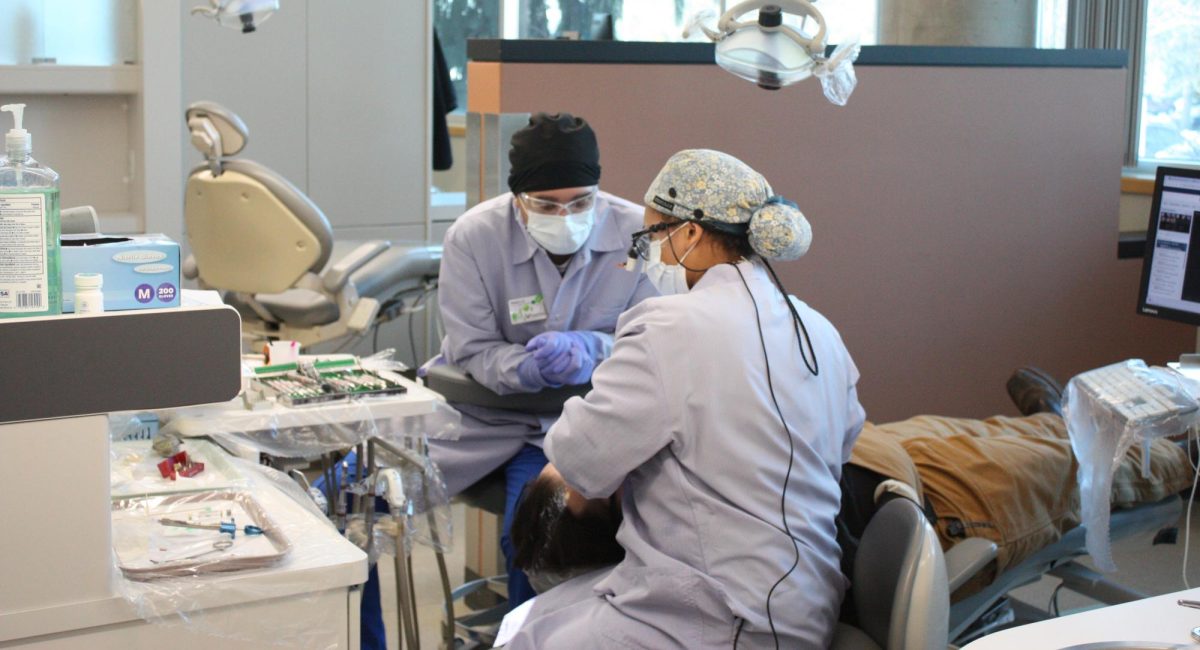Alcohol and caffeine cocktail a deadly combination
December 1, 2012
A Washington State University freshman was found unconscious on the floor in a residence hall early Oct. 27. Floor residents performed CPR until emergency responders arrived, according to The Daily Evergreen.
He never woke up.
The Whitman County Coroner’s office told the Seattle Times that 18-year-old Kenny Hummel’s blood alcohol level was over 0.40 grams per deciliter. Hummel died of alcohol poisoning leading to respiratory failure. His family said in an Oct. 31 press conference in Seattle that Hummel had been mixing alcohol with 5-Hour Energy drinks before he lost consciousness, according to the Seattle Times. It is not certain how many drinks he had consumed.
The legal blood alcohol limit for drivers under 21 in Washington state is 0.02, according to the Washington Department of Licensing, and 0.08 for drivers over 21. On the EWU campus, possession or consumption of alcohol by persons under the age of 21 is not permitted. Kegs or keg quantities of alcohol are not permitted in the residence halls, according to Revised Code of Washington law 66-44.270.
Depending on physical factors, such as body weight, a level of 0.30, which is 0.3 grams of alcohol per deciliter of blood, is potentially lethal; a level of 0.40 can cause coma or death and a level of 0.50 will likely be fatal, according to Washington University in St. Louis’s Habif Health and Wellness Center. Hummel had consumed an unknown number of servings of alcohol and at least one energy drink, according to the Evergreen article.
Lori Hays, program coordinator for Health, Wellness and Prevention Services, listed several programs provided by EWU that specifically address safe drinking. Examples of EWU programs include one-minute clinics, programs in the residence halls, talks for student athletes and presentations to EPIC before the group goes on trips.
While drinking alcohol unmixed with other drinks impairs people’s impulse control, adding an energy drink to the mix makes people perceive that they are less impaired than they really are, according to a 2011 research study on combining alcohol and energy drinks.
Researchers from Northern Kentucky University and the University of Maryland School of Public Health combined resources to compare the effects of drinking alcohol alone with the effects of mixing alcohol with an energy drink.
They worked with a group of 56 students, 28 men and 28 women, all between the ages of 21 and 33. Each student was assigned to one of four groups without being told which group they were in or what they were being given.
One group was given a placebo drink containing neither alcohol nor an energy drink. The second group was given alcohol alone, the third group was given an energy drink alone and the fourth group was given an alcohol and energy drink mixture.
The researchers discovered that students who were given alcohol alone and students who were given the alcohol and energy drink mixture were equally intoxicated. The problem was that the students who drank the alcohol and energy drink mixture felt stimulated and did not realize how impaired they were.
The higher risk-taking and greater impulsivity typically displayed by alcohol drinkers was significantly increased in the students who drank the mixture of energy drinks and alcohol. They did not feel drunk or woozy; they felt energetic.
Researchers concluded that drinking alcohol plus an energy drink did not decrease people’s impairment from drinking alcohol, but it did mask the symptoms of intoxication that the students would normally use to pace their drinking. It also increased risk-taking, impulsive behaviors already associated with alcohol.
Not only do those who drink alcohol and energy drinks together have a greater risk of accident or injury, they also tend to drink more because they do not feel the effects of the alcohol. They continue to drink beyond the point where they would normally feel drunk and stop drinking.
Premixed alcoholic energy drinks were banned in the state of Washington in 2010 after several cases of alcohol poisoning were linked to Four Loko.
Four Loko is a popular caffeinated malt liquor beverage containing as much alcohol as four to six beers and as much caffeine as a cup of coffee, according to a November 2010 Washington Post article.
The catalyst for the ban was the 2010 Central Washington University case in which nine students were rushed to the hospital from a party where a number of empty cans of Four Loko were found. This case led the university to ban “alcospeed” beverages in 2010 and motivated then-Washington state Attorney General Rob McKenna to press for a statewide ban on such drinks, a ban that did pass that same year.
According to a November 2010 Huffington Post article, Phusion Projects Inc., the company behind Four Loko, agreed to remove caffeine from its alcohol drinks just before the FDA was set to formally announce that caffeine is an unsafe food additive to alcoholic drinks, effectively banning them.
“We haven’t seen [students drinking alcohol mixed with energy drinks] at EWU this year,” said EWU Deputy Chief of Police Gary Gasseling. “I’m not saying it’s not happening, but we haven’t found any incidents of it with students that I know of.”
Gasseling went on to explain some of the risks of drinking alcohol with energy drinks. “It’s not illegal, so you’ve got to have a good healthy dose of common sense. It’s not a good idea, because you’re fighting your body’s ability to protect itself. … You’re overcoming your body’s ability to shut itself down when it needs to,” he said. “It’s on [officers’] radar all the time. We ask all our students to take a [blood alcohol test] … If you’re at 0.18 and an hour later you’re at 0.20, your blood alcohol level is going up, and we’ll take you to the hospital, because you’re in danger of respiratory arrest.”
Gasseling added, “If a student can’t or won’t take the test, we’ll send them to the hospital for safety. … We’ll err on the side of safety for the students.”
The Washington State Liquor Control Board has put out an information brochure that says: “With an alcohol content of 12 percent in a 23.5-ounce can, these products contained almost five standard drinks and caffeine equal to at least three cups of coffee.” The Partnership at Drug Free. org reports that energy drinks have about three times the caffeine of cola.
According to Interim Health Education Coordinator Karen Wanjico and Intox.com, alcohol slows down normal body functioning. With alcohol poisoning, a person is not getting enough oxygen and cannot regulate body temperature. The person is at risk for choking because dulled nerves can lead to suppression of the normal gag reflex that would save a vomiting person from choking.
Alcohol poisoning can cause permanent brain damage, coma and death. Diabetics can go into diabetic shock. These effects can sneak up on someone who is mixing alcohol with energy drinks because the person will not feel the dulling effects of the alcohol.
The National College Health Assessment conducts a survey on student drinking every two years on campuses across the U.S. According to Interim Health Education Coordinator Karen Wanjico, its latest survey at Eastern was done spring 2012 on a group of more than 1,300 students.
- 88 percent didn’t do something that injured themselves while drinking
- 81 percent did not have unprotected sex
- 76 percent did not forget where they had been or what they had done
- 72 percent in the past 12 months, did not do something while drinking that they later regretted
- 72 percent have not driven after drinking
- 61 percent have had alcohol in the last 30 days
- 44 percent have four or fewer drinks when they party (about half reported five or fewer drinks)
“Those are good numbers,” said Wanjico. “Eastern students generally practice good behavior. We just want to build the spacing and pacing part.”








